DreamWorks Animation: The Exhibition: – Journey from Sketch to Screen

“1nd most visited Brazilian Exhibition in 2019,by The ARTNewspaper.” DreamWorks Animation: The Exhibition: – Journey from Sketch to Screen features over 400 items including rare and never-before-seen concept drawings, models and original artworks, interviews and interactive displays from DreamWorks much-loved and favourite animated classics. Take a fascinating and exciting journey from original sketches of grumpy ogres and friendly dragons, to the amazing stories and worlds brought to the screen by DreamWorks’ award-winning artists. Rio de Janeiro 06.02.19 a 15.04.19 – Centro Cultural Banco do Brasil Belo Horizonte 15.05.19 a 29.07.19 – Centro Cultural Banco do Brasil Check the [clipping] of the exhibition. Créditos das imagens: 01. Kung Fu Panda (2008), artista Ritchie Sacilioc 02. Kung Fu Panda (2008), artistas Nico Marlet (personagem), Raymond Zibach (cor) 03. Madagascar (2005), artista Alex Puvilland 04. Trolls (2016), artista Timothy Lamb © 2019 DreamWorks Animation LLC. Todos os direitos reservados. Technical Information Curatorship ACMI (Australian Centre for the Moving Image) em colaboração com DreamWorks Animation Studio Production BrazilL Arte A Produções Rodolfo de Athayde Ania Rodríguez Project Direction Jennifer McLaughlin Install Direction Karen Ituarte Finance Lisiany Mayão Exhibitions DreamWorks Animation: The Exhibition: – Journey from Sketch to Screen Alphonse Mucha – The legacy of Art Nouveau Urban Being – Carlos Garaicoa Dalí: The Divine Comedy Sensitive Constructions: The Latin-American Geometric Experience in the Ella Fontanals-Cisneros Collection Los Carpinteros: Vital Object Lens of Memory – The Photography of Alberto de Sampaio V Edition of Baroque Music Festival of Alcantara The Tension – Leandro Erlich Ancestral Treasures of Peru
Alphonse Mucha – The legacy of Art Nouveau
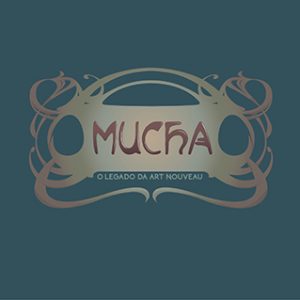
This exhibition brings the theoretical aspect of the work of the Czech artist Alphonse Mucha (1860-1939), especially his search for the beauty ideal – one of the main aspects of his art – and the impact of his style and aesthetic ideas behind the development of graphic design in contemporary cultural manifestations. The exhibition sets Mucha’s work in dialogue with these expressions that today are influenced by the ‘Mucha style’: – vintage product design, – psychedelic music album covers, – comics (manga), – tattoos. The show not only traces Mucha’s work as an artist, but also as the ultimate exponent of ArtNouveau. The exhibition is curated by Tomoko Sato and Ania Rodriguez and presents around 100 works, including posters, drawings, paintings, objects, books and photographs. The exhibition comprises 6 thematic sections, projections of the work “The Slavic epic” and interactive book displays. São Paulo – 15.12.2019 a 26.01.2020 – Centro Cultural FIESP Rio de Janeiro – 18.11.2020 a 28.02.2021 – Centro Cultural Banco do Brasil Technical Information Curatorship Tomoko Sato Ania Rodriguez Production Brazil Arte A Produções Rodolfo de Athayde Ania Rodríguez Executive Production Larissa Alves (Fishead Produções) Exhibit Design Adriana Milhomem (Luz em Formas) Exhibitions DreamWorks Animation: The Exhibition: – Journey from Sketch to Screen Alphonse Mucha – The legacy of Art Nouveau Urban Being – Carlos Garaicoa Dalí: The Divine Comedy Sensitive Constructions: The Latin-American Geometric Experience in the Ella Fontanals-Cisneros Collection Los Carpinteros: Vital Object Lens of Memory – The Photography of Alberto de Sampaio V Edition of Baroque Music Festival of Alcantara The Tension – Leandro Erlich Ancestral Treasures of Peru
Urban Being – Carlos Garaicoa
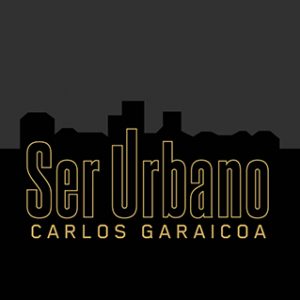
The Exhibition “Urban Being” presents recent work by Carlos Garaicoa, one of the most highly regarded Latin American artists of today. Curated by Rodolfo de Athayde, the show proposes a reflection on the “urban being”, ontological condition par excellence of the contemporary man. Seven works are presented which dialogue on architecture, urbanism and geopolitics. The works address an existential relationship with the city, apart from physical space. Although the structures of the metropolises comprise the fundamental mortar of his works, the analysis of the symbologies of power does not elude the artist’s creative scope, coming from a subjective, almost intimate vision that reflects history and sensitivity. São Paulo 07.02 a 06.05.2018 – Espaço Cultural Porto Seguro Check the [clipping]of the exhibition. Technical Information Curatorship Rodolfo de Athayde General Coordination Ania Rodríguez Project Management Jennifer McLaughlin Install Direction Karen Ituarte Finance Lisiany Mayão Exhibitions DreamWorks Animation: The Exhibition: – Journey from Sketch to Screen Alphonse Mucha – The legacy of Art Nouveau Urban Being – Carlos Garaicoa Dalí: The Divine Comedy Sensitive Constructions: The Latin-American Geometric Experience in the Ella Fontanals-Cisneros Collection Los Carpinteros: Vital Object Lens of Memory – The Photography of Alberto de Sampaio V Edition of Baroque Music Festival of Alcantara The Tension – Leandro Erlich Ancestral Treasures of Peru
Dalí: The Divine Comedy
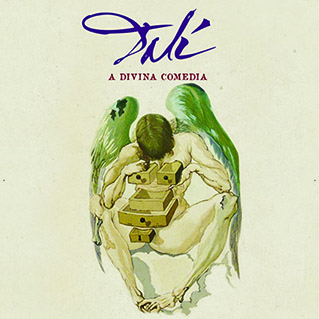
What happens when two great masters, from distant times and places, meet to talk about the depths of their lives in their arts? When Salvador Dalí, the great painter of Surrealism, received an order, from the Italian government in the 50s-60s, to paint a series on the Divine Comedy in celebration of the 700th anniversary of the birth of great Renaissance poet Dante Alighieri (13th century) he did not imagine the journey that he was going to make, nor to where or with whom he would go. And this is the journey that the exhibition Dali: The Divine Comedy shows us, with 100 prints by Dali that illustrate, one by one, the chants of Dante’s epic poem. The collection, which belongs to a private collector in Spain, takes visitors not only on the journey that Dante made in his classic work, from hell to paradise, but also on the self-inquisitive journey of Dali to his own depths, where each print of the Divine Comedy is also a reflection of his artistic work, his art and his life on it. And in playing this role of his own Virgil, Dali guides himself in the layers that Dante climbed: in the engravings related to Hell, Dali portrays his agonies referring to his most famous phase, the surrealist period; in Paradise, he finds the serenity that makes reference to his Mystic-nuclear manifesto, of the atomization of the figure, his quest for spirituality, a lesser known but extremely important moment in the work of Dali; and in Purgatory, the controversial angels of his period of transition between the two phases. All this in an environment sonorously enveloped by the fabulous Dante Symphony, composed by Liszt. And so, the exhibition Dali: The Divine Comedy is made up of dialogues between the Florentine and the Catalan, between literature and the visual arts & music, and between the Renaissance and the early 20th century, in a conversation that visitors must intently listen to with their eyes. Rio de Janeiro 17.07 a 02.09.2012 – Centro Caixa Cultural RJ Curitiba 13.03 a 19.05.2013 – Caixa Cultural PR Recife 12.06 a 14.07.2013 – Caixa Cultural PE São Paulo 31.08 a 27.10.2013 – Caixa Cultural SP Salvador 18.12.2013 a 23.02.2014 – Caixa Cultural BA Belo Horizonte 18.07 a 17.08.2014 – Academia Mineira de Letras BH Ouro Preto 22.08 a 05.10.2014 – Museu da Inconfidência OP Campinas 18.05 a 10.07.2016 – Centro de Atividades Sesi Campinas I Itapetininga 15.07 a 28.08.2016 – Centro de Atividades Sesi Itapetininga São José do Rio Preto 02.09 a 16.10.2016 – Centro de Atividades Sesi São José do Rio Preto São José dos Campos 21.10 a 04.12.2016 – Centro de Atividades Sesi São José dos Campos Fortaleza 26.04 a 02.07.2017 – Caixa Cultural de Fortaleza Brasília 14.11.2017 a 04.03.2018 – Caixa Cultural de Brasília Technical Information Curatorship Rodolfo de Athayde Ania Rodriguez General Coordination Rodolfo de Athayde Ania Rodriguez Project Management Jennifer Mclaughlin Install Direction Karen Ituarte Executive Assistant Daniele Oliveira Finance Lisiany Mayão Exhibitions DreamWorks Animation: The Exhibition: – Journey from Sketch to Screen Alphonse Mucha – The legacy of Art Nouveau Urban Being – Carlos Garaicoa Dalí: The Divine Comedy Sensitive Constructions: The Latin-American Geometric Experience in the Ella Fontanals-Cisneros Collection Los Carpinteros: Vital Object Lens of Memory – The Photography of Alberto de Sampaio V Edition of Baroque Music Festival of Alcantara The Tension – Leandro Erlich Ancestral Treasures of Peru
Sensitive Constructions: The Latin-American Geometric Experience in the Ella Fontanals-Cisneros Collection

The exhibition Construções Sensíveis: The Latin-American Geometric Experience in the Ella Fontanals-Cisneros Collection brings to Brazil a profi le of the abstraction present in our continent. Together with the important legacy of the Brazilian concretism and neo-concretist movements, the abstract poetics that fl ourished in other countries from the 1930s onwards will be on display. This dialogue between artistic trends puts into perspective the specific details and contributions Brazil has made to the geometric experiences as part of a regional context rather than as an isolated case. This exhibition provides a forum for the dialogue between artists and groups from countries such as Brazil, Argentina, Uruguay, Cuba, Venezuela, Colombia and Mexico. Even in those cases in which there are no proven historical ties between artists of diff erent latitudes, the links can be established out of an obvious common understanding that affi liates the trends derived from constructivism as an aesthetic paradigm. The ‘constructive desire’ that inspires these artists provides the basis for the singular discourses that each group defends. This is an exhibition developed especially for Brazil, forming a subtle tribute to the ‘Arte Agora III, América Latina: Geometria sensível’, exhibition, that was on display at the Museum of Modern Art in Rio de Janeiro in 1978, but which was destroyed by a tragic fi re. Many of the artists presented at that historic event are present here, as a representation of the pioneering trends in the region, now displayed together with contemporary artists who are pointing the way forward for abstraction today. Rio de Janeiro 27.06.18 a 17.09.18 – Centro Cultural Banco do Brasil Belo Horizonte 12.10.18 a 07.01.19 – Centro Cultural Banco do Brasil Check [clipping] what was published about it. Technical Information Curatorship Ania Rodriguez Rodolfo de Athayde General Coordination Ania Rodríguez Project Management Jennifer McLaughlin Install Direction Karen Ituarte Executive Assistant Daniele Oliveira Finance Lisiany Mayão Exhibitions DreamWorks Animation: The Exhibition: – Journey from Sketch to Screen Alphonse Mucha – The legacy of Art Nouveau Urban Being – Carlos Garaicoa Dalí: The Divine Comedy Sensitive Constructions: The Latin-American Geometric Experience in the Ella Fontanals-Cisneros Collection Los Carpinteros: Vital Object Lens of Memory – The Photography of Alberto de Sampaio V Edition of Baroque Music Festival of Alcantara The Tension – Leandro Erlich Ancestral Treasures of Peru
Los Carpinteros: Vital Object
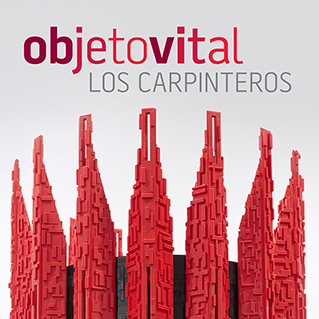
The exhibition “Los Carpinteros: Vital Object” offers a retrospective of one of the most highly-acclaimed art collectives at work today. With never-before-seen works of art bursting with ideas, that have been produced through the creative use of architecture, sculpture and design. Los Carpinteros consisting of Cuban artists Marco Castillo and Dagoberto Rodríguez – are well known for their strong social appeal and their acid, shrewd and humorous critical eye. The artists question the utility of things and explore the clash between function and object. The exhibition includes more than 70 works of art: sketches, watercolors, sculptures, installations, videos and site-specific pieces. The public is able to follow each phase the collective has been through, from the 1990s up to never-before-seen pieces created especially for the exhibition in Brazil, starting from the early ideas and designs. The object is the protagonist of this exhibition, forced into constant metamorphosis by the artistic view expressed in drawings, created and tested in three-dimensional models, or achieving their maximum expression as a utopia in the large installations. São Paulo 30.07 a 12.10.2016 – Centro Cultural Banco do Brasil SP Brasília 03.11.2016 a 15.01.2017 – Centro Cultural Banco do Brasil DF Belo Horizonte 01.02 a 03.04.2017 – Centro Cultural Banco do Brasil BH Rio de Janeiro 02.05 a 01.08.2017 – Centro Cultural Banco do Brasil RJ Curitiba 23.08 a 03.12.2017 – Museu Oscar Niemeyer Check the [catálogo] and the[clipping] of the exhibition. Technical Information Curatorship Rodolfo de Athayde General Coordination Ania Rodríguez Project Management Jennifer McLaughlin Install Direction Karen Ituarte Executive Assistant Daniele Oliveira Finance Lisiany Mayão Finance Assistant Daiane Barbosa Exhibitions DreamWorks Animation: The Exhibition: – Journey from Sketch to Screen Alphonse Mucha – The legacy of Art Nouveau Urban Being – Carlos Garaicoa Dalí: The Divine Comedy Sensitive Constructions: The Latin-American Geometric Experience in the Ella Fontanals-Cisneros Collection Los Carpinteros: Vital Object Lens of Memory – The Photography of Alberto de Sampaio V Edition of Baroque Music Festival of Alcantara The Tension – Leandro Erlich Ancestral Treasures of Peru
Lens of Memory – The Photography of Alberto de Sampaio
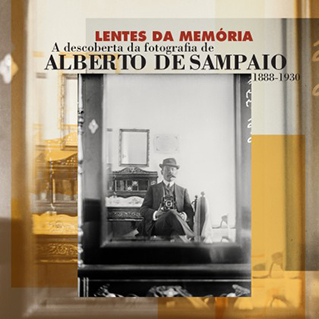
This exhibition reveals the life and work of an ordinary man, an avid imagery dilettante, who created an incredible memoir deeply influenced by photography and cinema. His photographic work began at the end of the nineteenth century, and for over forty years, Alberto Sampaio was an amateur. He wrote poetry and conceived paintings, an artistic soul who was always connected to the modernity and the antagonism arising from the social changes of his time. The world was moving fast, and so was technology. He felt the need to regain something he had lost. Photography, his first passion, served as an artifact able to please such paradox: pure amusement, the magic of creation as an intellectual delight, and finally, learning that images technically produced addressed memorialistic purposes able to seduce those who spent long hours in their labs, surrounded by chemicals and precision devices. Alberto de Sampaio was born in Rio de Janeiro in 1870, spending most of his life in Petropólis. His photographs, like an iconographic narrative, lead us to postcards, illustrated magazines, and the early stages of cinema. An era of abundance and excesses had begun, bringing amateur photographers to actively participate in this profuse, fast moving ambiance. There were those who founded photo clubs, the first photo societies formally put together in Brazil; there were others who fell in love by the versatility provided by Kodak cameras; distinct lines of thought that could coexist under specific circumstances, but not according to Alberto de Sampaio. Throughout his active years, the lawyer by training cultivated an interest in a wide variety of subjects. His photography is the portrait of an era plenty of possibilities; images that expose subjective intimacies. His photographic memoir invites us into his home, allowing us to open up the windows to see light through small cracks, while immersed in materiality converted into an object. Yet, the presupposed natural set up and restrained gestures were slowly replaced by imprecise takes, simple characters of a memoir. Over the years, the erudite amateur became a mere apprentice of memorialistic records. The same path is noticed on the photographs of the city he selected as his own urban theme: Rio de Janeiro and its ambivalent modernity during Mayor Pereira Passos Urban Reform, between 1902 and 1906. Central Avenue (Avenida Central) has been revealed by many prestigious Brazilian professional photographers. Alberto de Sampaio, however, preferred not to embellish new scenarios. Instead, he exposed the slow reconstruction of Rio de Janeiro and the birth of a new metropolis through building facades being refurbished according to European standards. From 1927 to 1930, his passion for photography gave room to images in motion. City memoirs were converted into moving scenes, captured by a 16mm camera; a device capable of blending time passages, past could become present through an apotheosis of interrupted images, a visual narrative that would impregnate and fascinate the minds of the twentieth century. São Paulo 18.09.2015 a 01.11.2015 – Instituto Tomie Ohtake Rio de Janeiro 08.10.2016 a 04.12.2016 – Centro Cultural Correios Technical Information Curatorship Adriana Martins Perreira General Coordination Rodolfo de Athayde Ania Rodríguez Project Management Jennifer McLaughlin Install Coordination Karen Ituarte Executive Assistant Daniele Oliveira Finance Lisiany Mayão Exhibitions DreamWorks Animation: The Exhibition: – Journey from Sketch to Screen Alphonse Mucha – The legacy of Art Nouveau Urban Being – Carlos Garaicoa Dalí: The Divine Comedy Sensitive Constructions: The Latin-American Geometric Experience in the Ella Fontanals-Cisneros Collection Los Carpinteros: Vital Object Lens of Memory – The Photography of Alberto de Sampaio V Edition of Baroque Music Festival of Alcantara The Tension – Leandro Erlich Ancestral Treasures of Peru
V Edition of Baroque Music Festival of Alcantara
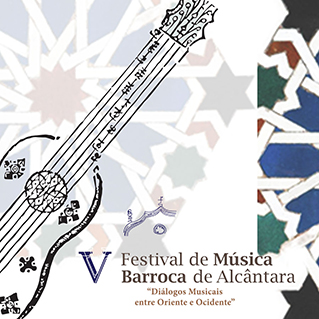
V Edition of Baroque Music Festival of Alcantara will be dedicated to the theme “Musical Dialogues between East and West” and pay tribute to the song “Spanish-Andalusian” or “Arab-Andalusian”. Born of the mixture of various cultural, African and oriental ingredients from the eighth century on the Iberian Peninsula, the Arab-Andalusian music has influenced the European music from the Middle Ages to today. The Brazil, and particularly Maranhao, offer themselves as the ideal place to promote such musical encounters. For the maranhenses land coexists one people mosaic so different roots. The miscegenation is the rule since Tupinambás and Tapuia people were surprised by galleons Iberians full of greed and exclusionary utopia. Remember, in our sad times of new ethnic wars in the East and in Africa, the modern era of suffering and discrimination, huge processions of exiles not seen since World War II, the Maranhão also hosted several diasporas aimlessly. The exiles ‘economic’ volunteers are always joined waves of immigrants, victims of human violence symbolized by slavery, by religious conflicts, the “pogroms” of all genres and by the bursting of the old European and Ottoman empires. Pilgrims from many exoduses came to these lands. Africans from various nations, Europe without borders and more diverse as eastern Syrian-Lebanese, Turkish, Sephardic Jews etc, all of which had to rebuild in these new lands. A “mixture” whose main cultural ingredients, curiously, had already lived together for more than seven centuries in the Iberian Peninsula, that big old world artistic and intellectual polo were Spain and Portugal Islamic Al-Andalus. From that fertile territory left people Spanish and Portuguese colonists founders of that South America has been called the Far West. This miscegenation wants to inspire the V edition of the Festival, which will spread a message of peace through the old songs from around the world (but with a common core) and performed by groups from countries that today are in conflict or war between them. It will be the inclusion and harmony Festival, which want to open up and offer their public access to new musical horizons that bring together men and women of all backgrounds and do not keep them, there as here, in ethnic ghettos, social and also cultural. Rosário, Bacabeira, Alcântara e São Luís 21.07 a 27.07.2016 Technical Information General Production Coordinator Arte A Production Executive Production Tatiana Coelho Production Supervision Jennifer McLaughlin Production Assistant Daniele Oliveira Finance Lisiany Mayão Exhibitions DreamWorks Animation: The Exhibition: – Journey from Sketch to Screen Alphonse Mucha – The legacy of Art Nouveau Urban Being – Carlos Garaicoa Dalí: The Divine Comedy Sensitive Constructions: The Latin-American Geometric Experience in the Ella Fontanals-Cisneros Collection Los Carpinteros: Vital Object Lens of Memory – The Photography of Alberto de Sampaio V Edition of Baroque Music Festival of Alcantara The Tension – Leandro Erlich Ancestral Treasures of Peru
The Tension – Leandro Erlich
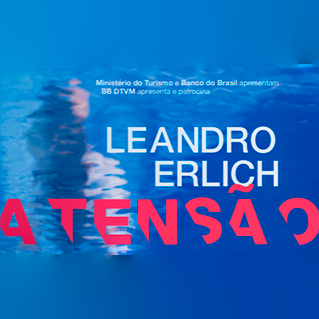
The exhibition ATensão brought together a set of 20 large-scale works that challenged the way we see the buildings of the Centro Cultural Banco do Brasil: floating boats and elevators, windows to imaginary gardens, and even a pool where visitors can enter fully clothed and be submerged without fear of drowning were part of the show by one of the most provocative and popular names in contemporary art, Leandro Erlich. The name is quite explicit, ATensão (and phonetically ambiguous: those who don’t read it may hear “attention”), revealing one of the likely feelings that visitors experienced when faced with the artist’s installations. This is because Erlich works brings references that are literally “commonplaces,” spaces we are accustomed to see in our daily lives but displaced from their normal condition. Leandro Erlich’s work is structured around the mechanism of doubt. What our eyes see is at odds with what our minds know. Born in 1973 and producing his works in his studios in Buenos Aires and Montevideo, Erlich is constantly breaking the boundaries we normally believe exist between reality and illusion. An important example of this artistic illusionism was how he “made disappear” the tip of the Buenos Aires obelisk, a gigantic monument built in 1936 to commemorate the city’s 400th anniversary, which dominates the landscape near the Casa Rosada, the Argentine government’s headquarters, “relocating” this tip at the entrance of the Malba. However, more “universal” is the work “Swimming Pool,” which was installed in the courtyards of the CCBBs. A success wherever it is exhibited, Erlich’s pool is an installation where sensations are absurd for both those inside it – without getting wet – and for those outside: a layer of water between the outside and inside creates the illusion that the people in the background are actually immersed in a pool where they don’t need to breathe. According to the critic Hans Herzog, Erlich’s works can, in some way, be compared to Escher’s trompe-l’oeils. The amazement and surprise they instantly provoke “border on being slightly sinister,” Herzog states, making their ambiguity and absurdity evident. “Ultimately, Leandro Erlich’s installations turns against a hasty determination of the function and meaning of the objects that surround us – completely confusing our senses and making us reflect on what is reality and what is illusion.” Another critic, the Argentine Rodrigo Alonso, argued that Leandro Erlich’s work breaks with the automatism of our world by using resources such as “challenging gravity, inverting spaces, deceiving the gaze, turning the viewer into a voyeur, forcing perspectives, manipulating duplicity, instrumentalizing special effects, encouraging curiosity, turning the viewer into an actor, activating banal scenarios, disturbing mundane temporality, expanding spaces, opening windows to other realities, reinterpreting the everyday, suspending the definitions of true and false, building verisimilitude, provoking identification, and enhancing the unusual.” By displacing the viewer’s prior knowledge of what we could call, resorting to a commonplace in language, a “comfort zone,” Erlich necessarily places the viewer in confrontation with what their experience said about a given situation, demanding engagement and participatory attention to unravel each work. Belo Horizonte 15.09 a 22.11.21 – Centro Cultural Banco do Brasil Rio de Janeiro 5.01 a 07.03.22 – Centro Cultural Banco do Brasil São Paulo 13.04 a 20.06.22 – Centro Cultural Banco do Brasil Tour Virtual : A Tensão – Tour Technical Information Concept and Production Arte A Produções Curatorship Marcelo Dantas General Coordination Ania Rodriguez Rodolfo de Athayde Project Management Karen Ituarte Art Design Bete Esteves Lighting Adriana Milhomem Exhibition Layout Adriana Milhomem Finance Lisiany Mayão Exhibitions DreamWorks Animation: The Exhibition: – Journey from Sketch to Screen Alphonse Mucha – The legacy of Art Nouveau Urban Being – Carlos Garaicoa Dalí: The Divine Comedy Sensitive Constructions: The Latin-American Geometric Experience in the Ella Fontanals-Cisneros Collection Los Carpinteros: Vital Object Lens of Memory – The Photography of Alberto de Sampaio V Edition of Baroque Music Festival of Alcantara The Tension – Leandro Erlich Ancestral Treasures of Peru
